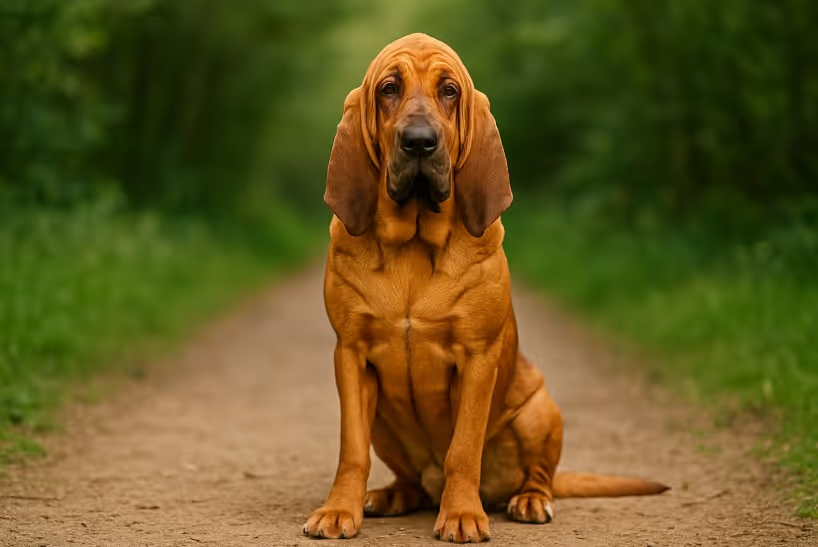The Bloodhound is a large scent hound renowned for its unmatched ability to follow even the faintest trails — sometimes days old. Known for its wrinkled skin, long ears, and deep-set eyes, the Bloodhound is gentle, affectionate, and deeply loyal. It thrives in homes with ample space and active owners who can match its energy. Though strong-willed, it makes an excellent family dog when trained early and consistently.

The Bloodhound’s roots date back to medieval Europe, where monks at the Abbey of St. Hubert in Belgium selectively bred scent hounds for tracking. Later refined in France and England, the breed became essential for game hunting and, later, law enforcement. In fact, Bloodhound evidence has been admitted in court due to the breed’s incredible nose. Today, they’re beloved for their gentle nature and working intelligence.
Bloodhounds may have a short coat, but their wrinkles and ears demand attention. Wipe down facial folds regularly to prevent moisture buildup. Clean ears weekly to avoid infections, as their long ears trap debris.
Routine Care:
Bloodhounds require 60–90 minutes of physical activity daily. They excel at nose work, hiking, or scent trails. Without exercise and stimulation, they may become destructive.
Ideal Activities:
Patience and consistency are key. Bloodhounds are highly intelligent but stubborn. Start training early with positive reinforcement and scent-based games.
Common Challenges:
Feed your Bloodhound a large-breed formula rich in protein and glucosamine to support joints. Divide meals into two servings to reduce the risk of bloat.
Diet Tips:
Look for reputable breeders or breed-specific rescues like:
Questions to Ask Breeders:
1. Do Bloodhounds make good family pets?
Yes! They are gentle and loyal, great with children and other pets. Just supervise around small kids due to their large size.
2. Are Bloodhounds easy to train?
Moderately — they are smart but headstrong. Scent-based rewards and early training are crucial.
3. Do Bloodhounds smell?
They do have a distinct hound odor due to skin oils and wrinkles. Regular bathing helps manage it.
4. Can they live in an apartment?
Not ideal. Bloodhounds need space and secure outdoor areas to roam and explore.
5. How far can a Bloodhound track a scent?
They’ve been known to follow scent trails over 100 miles and up to two weeks old!